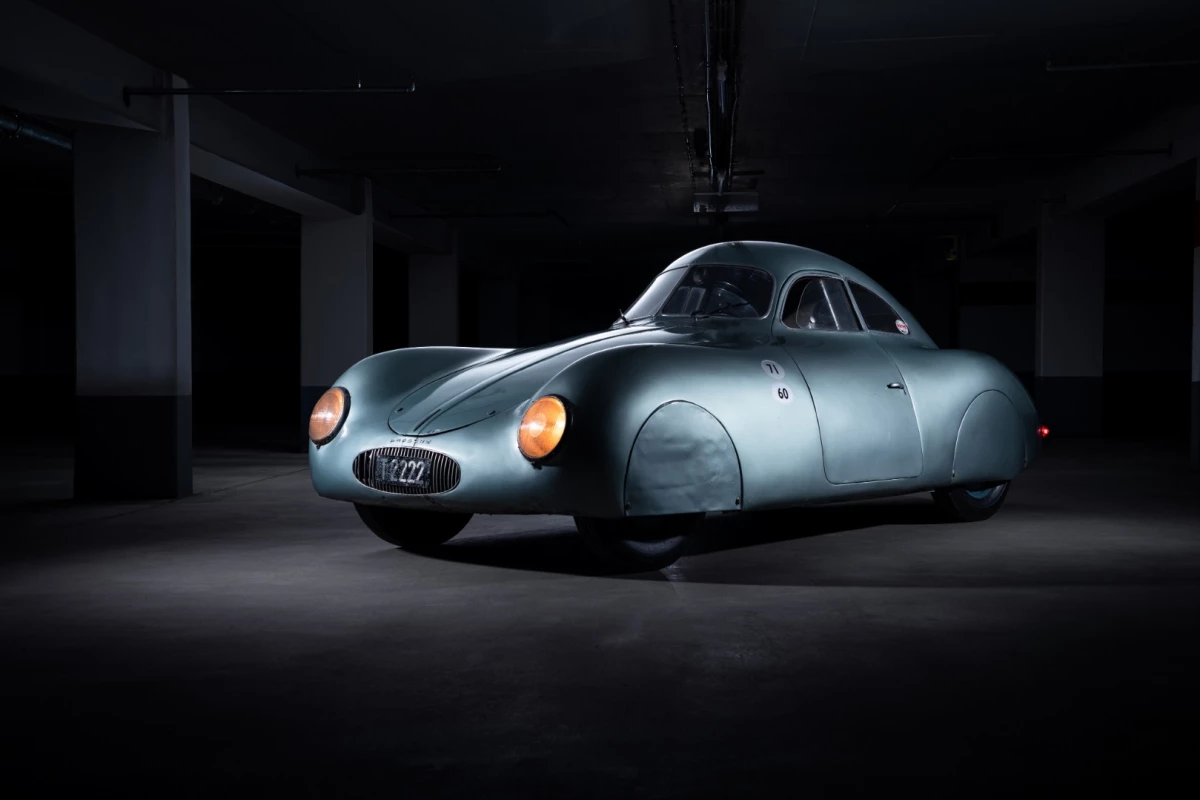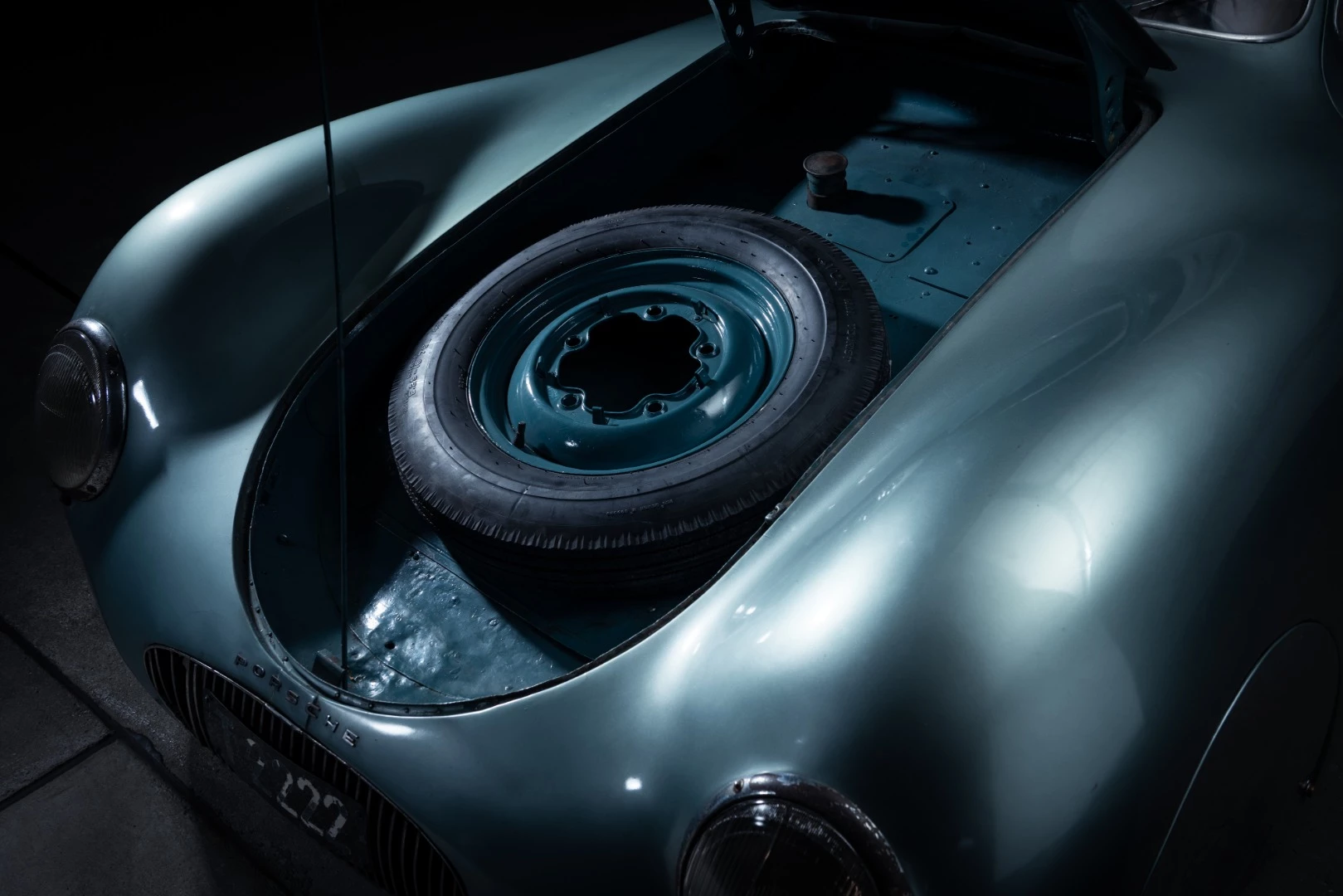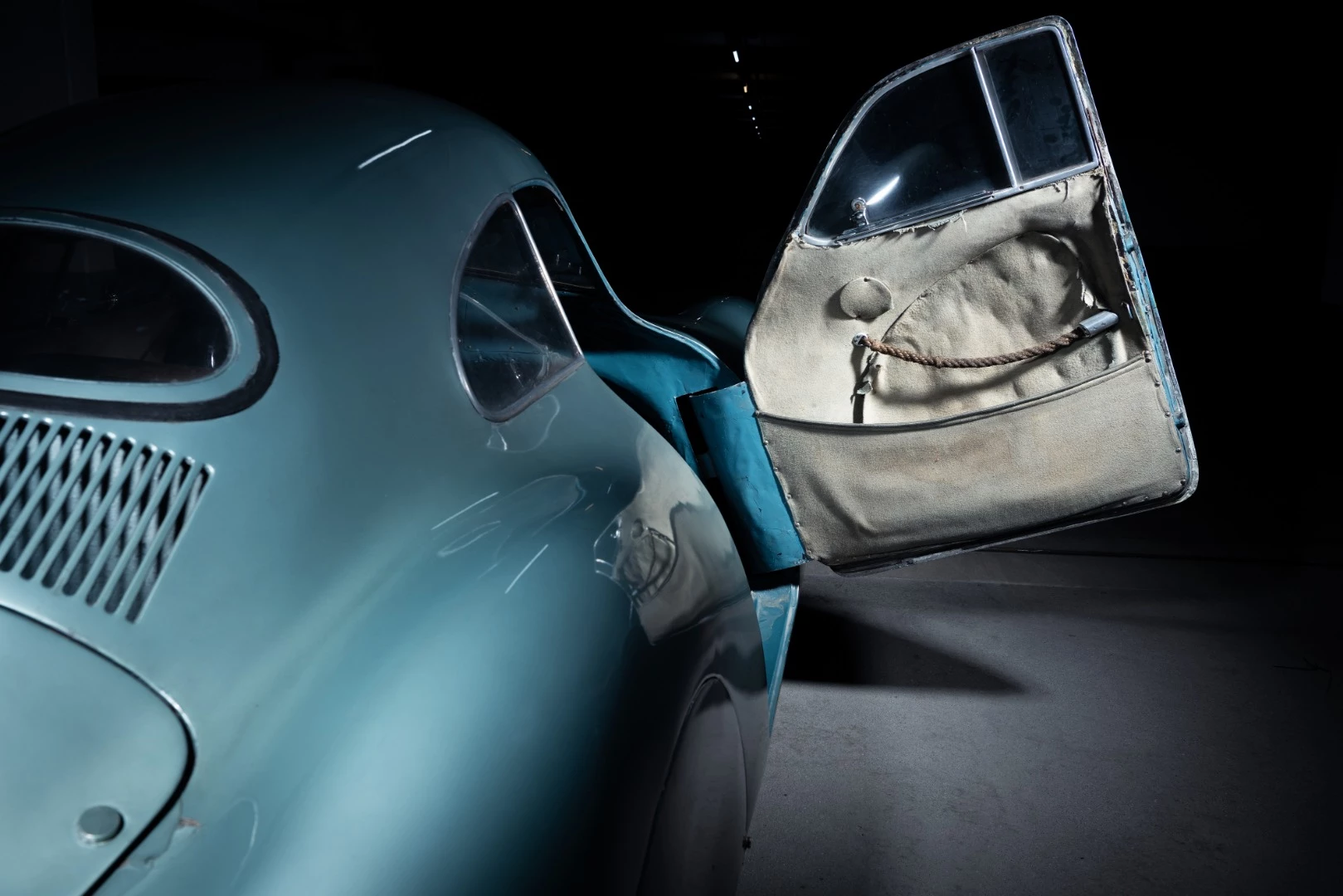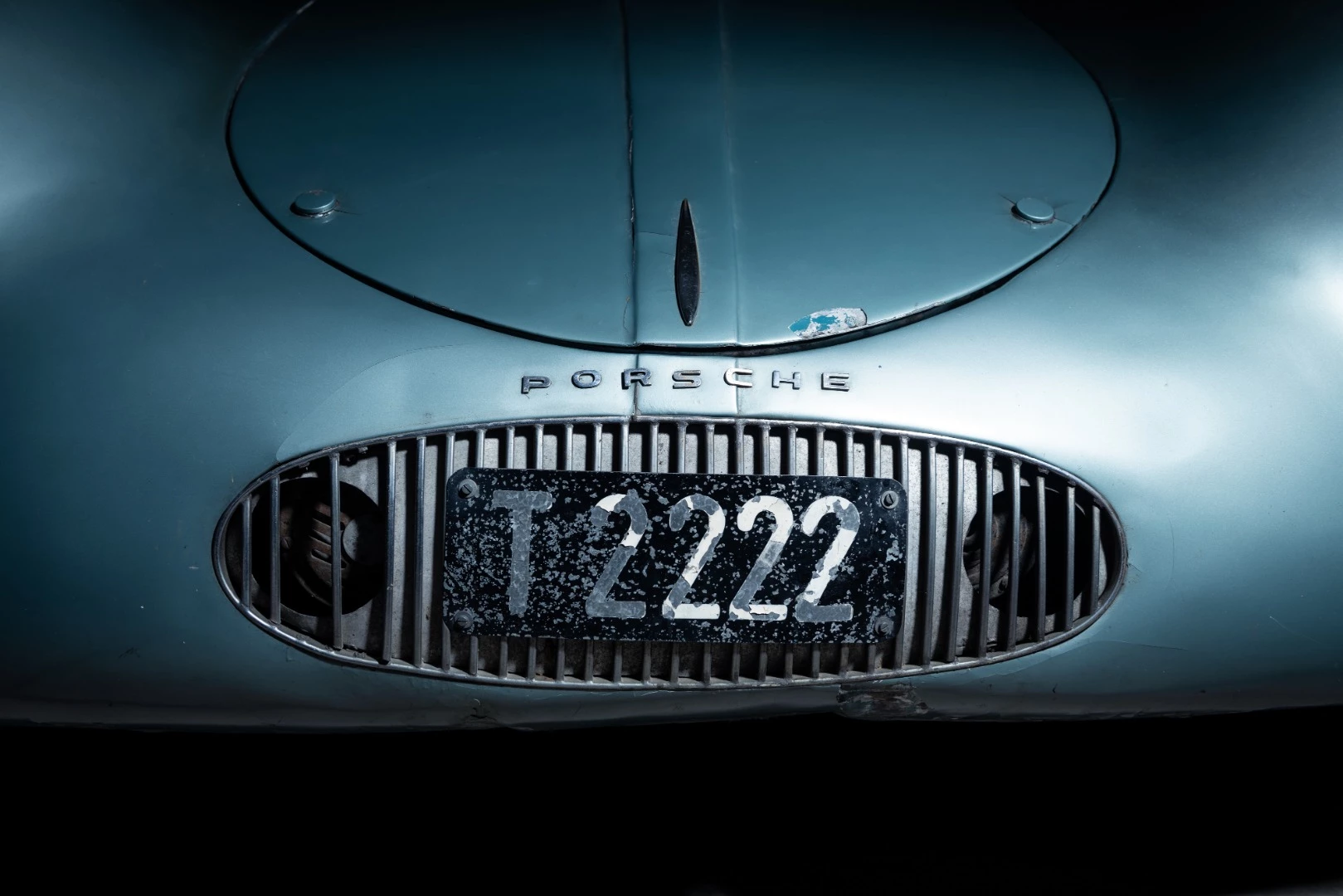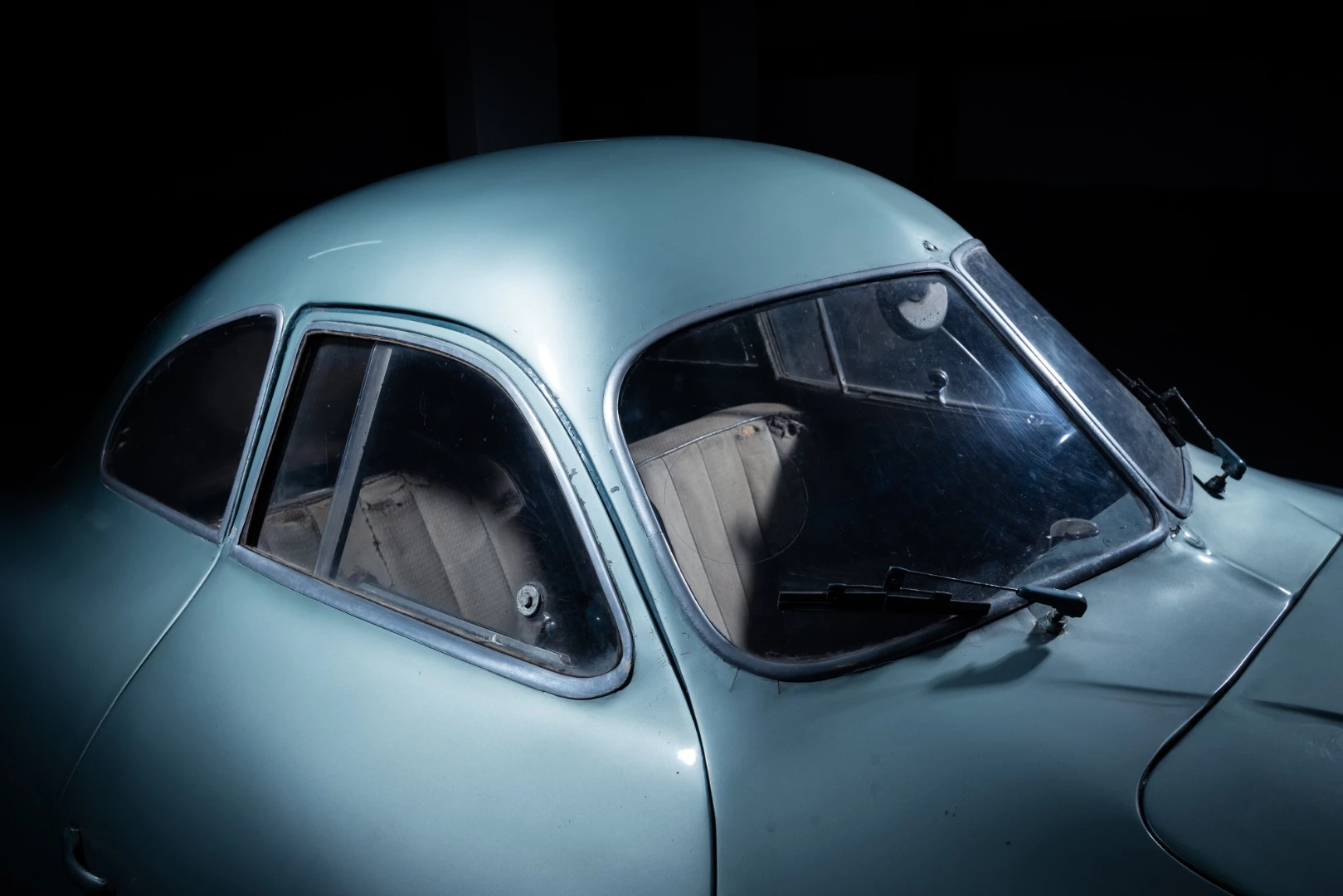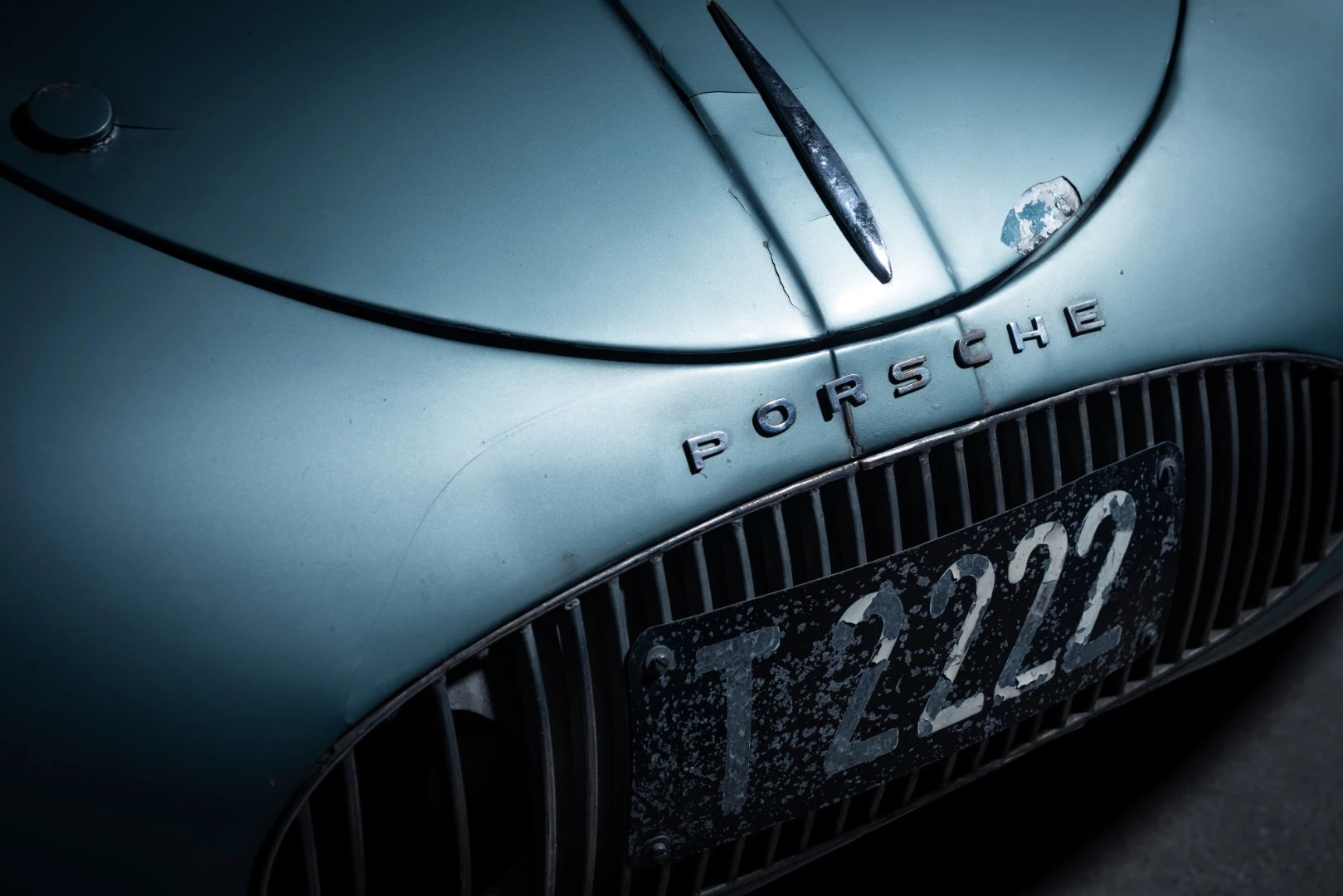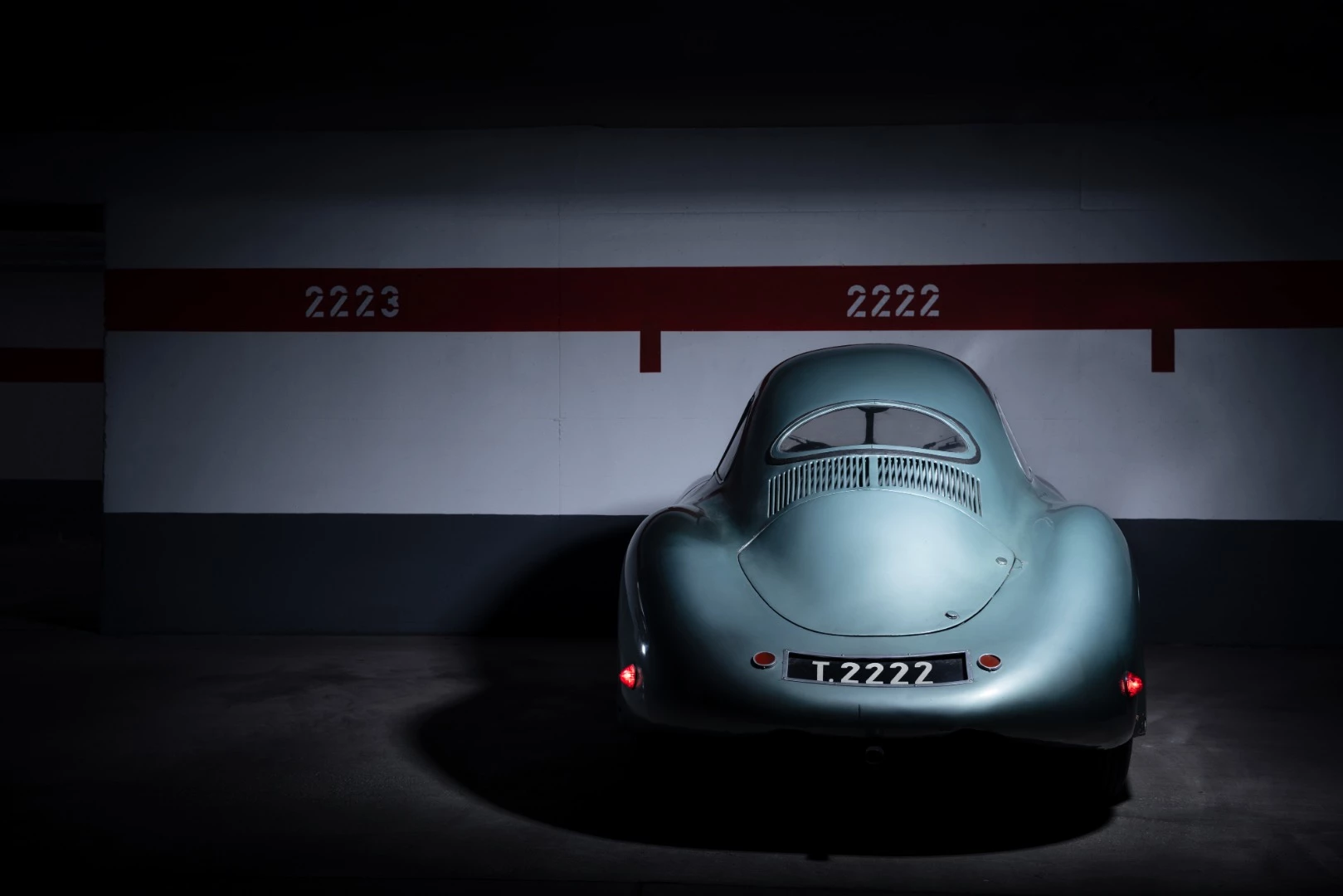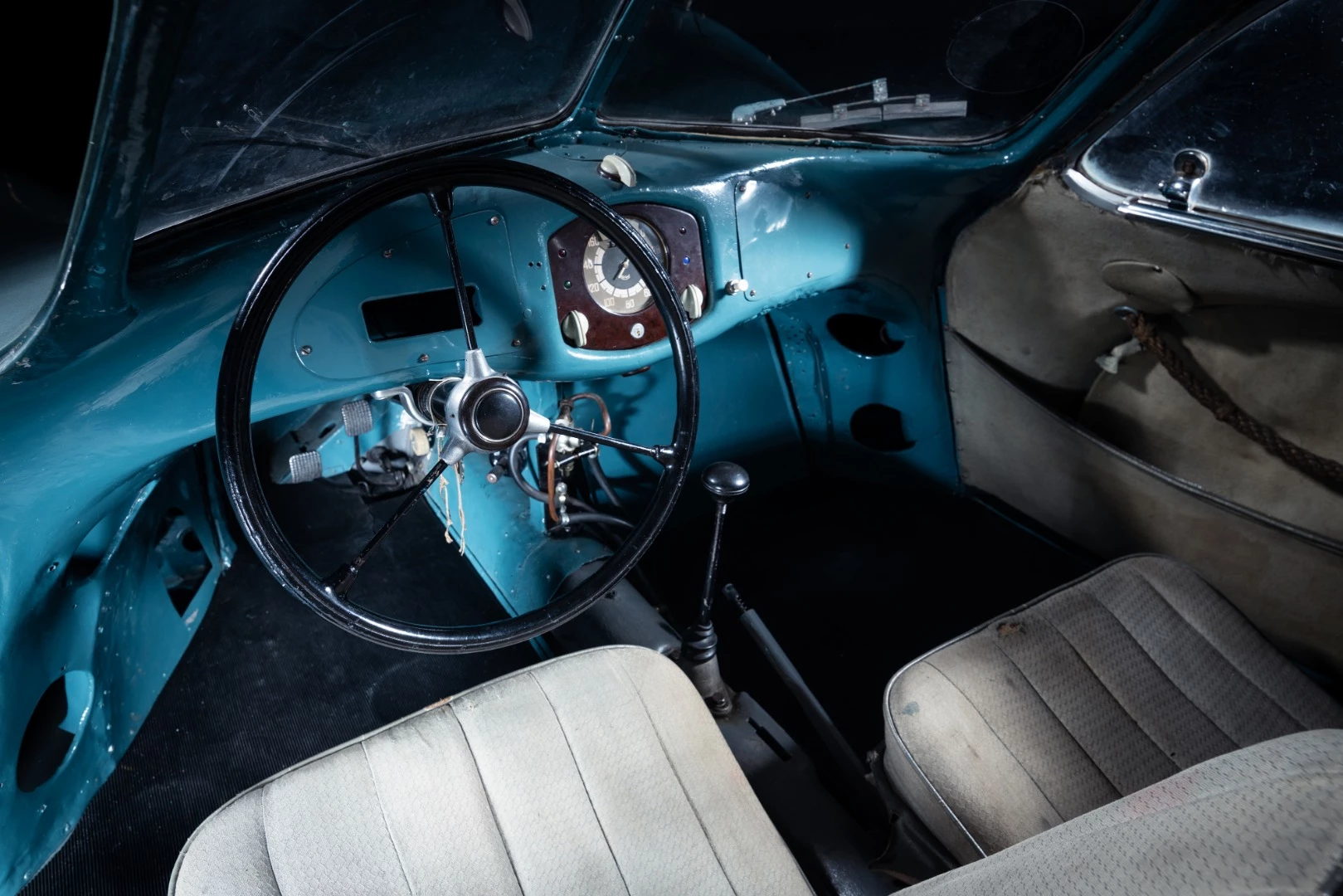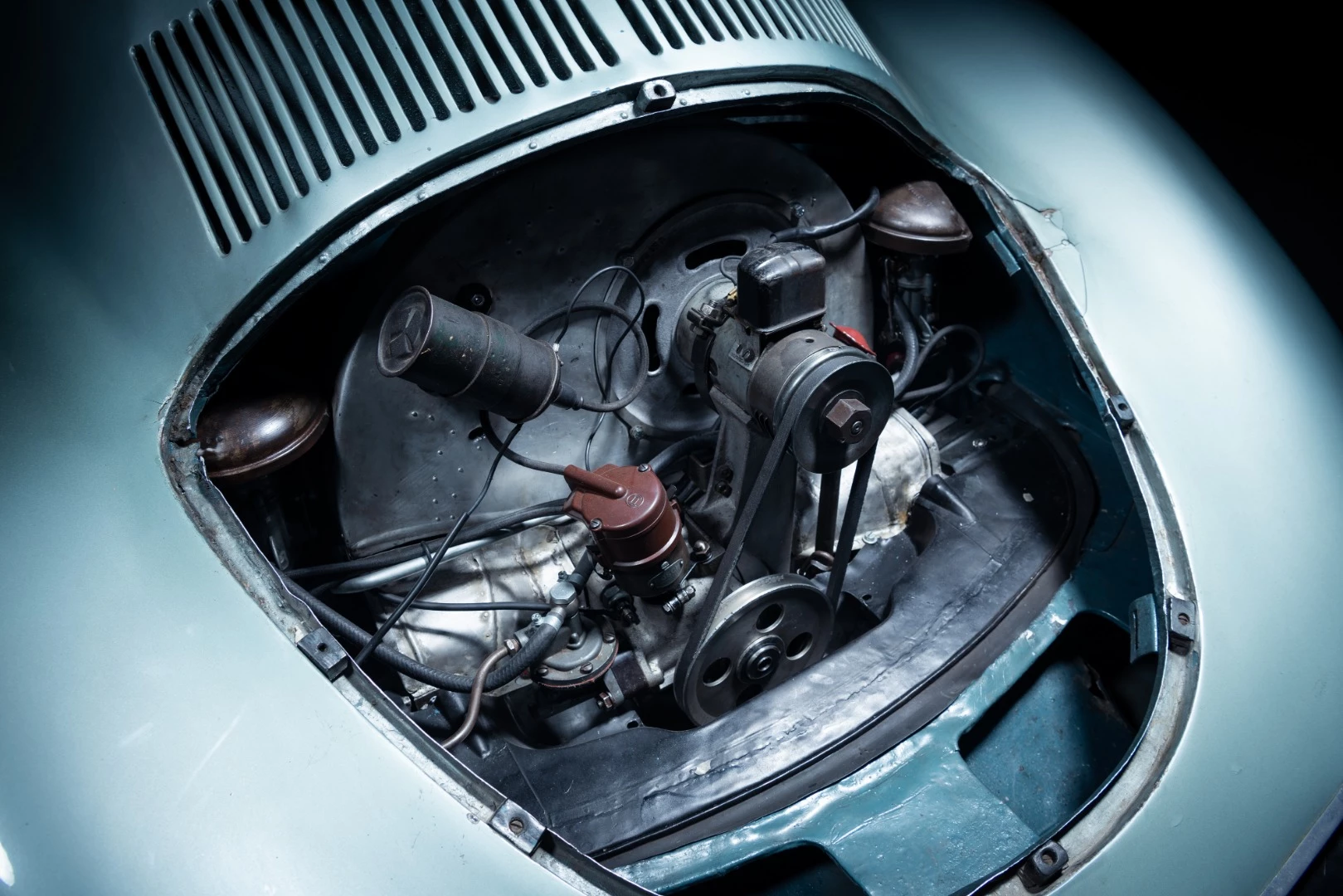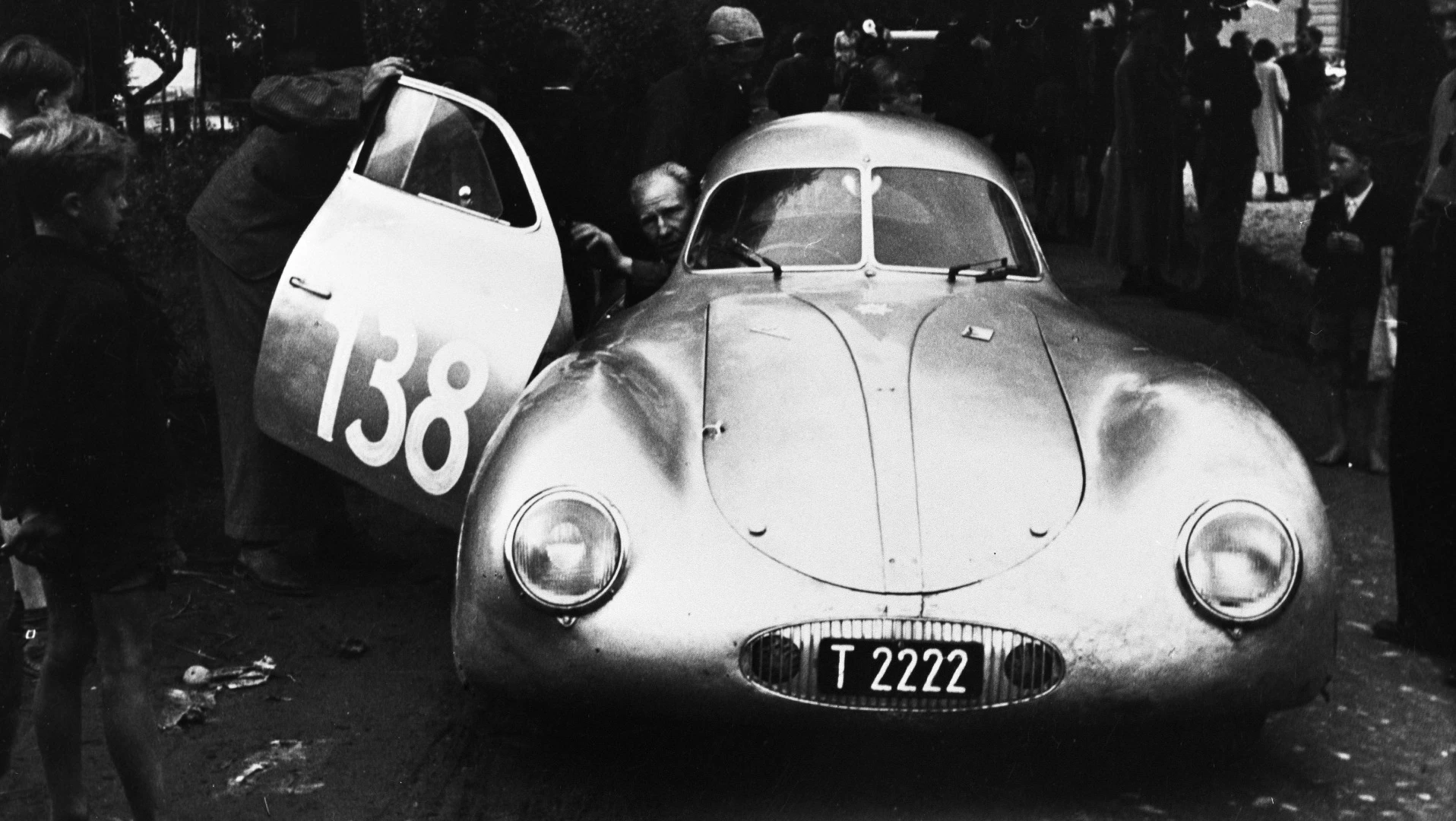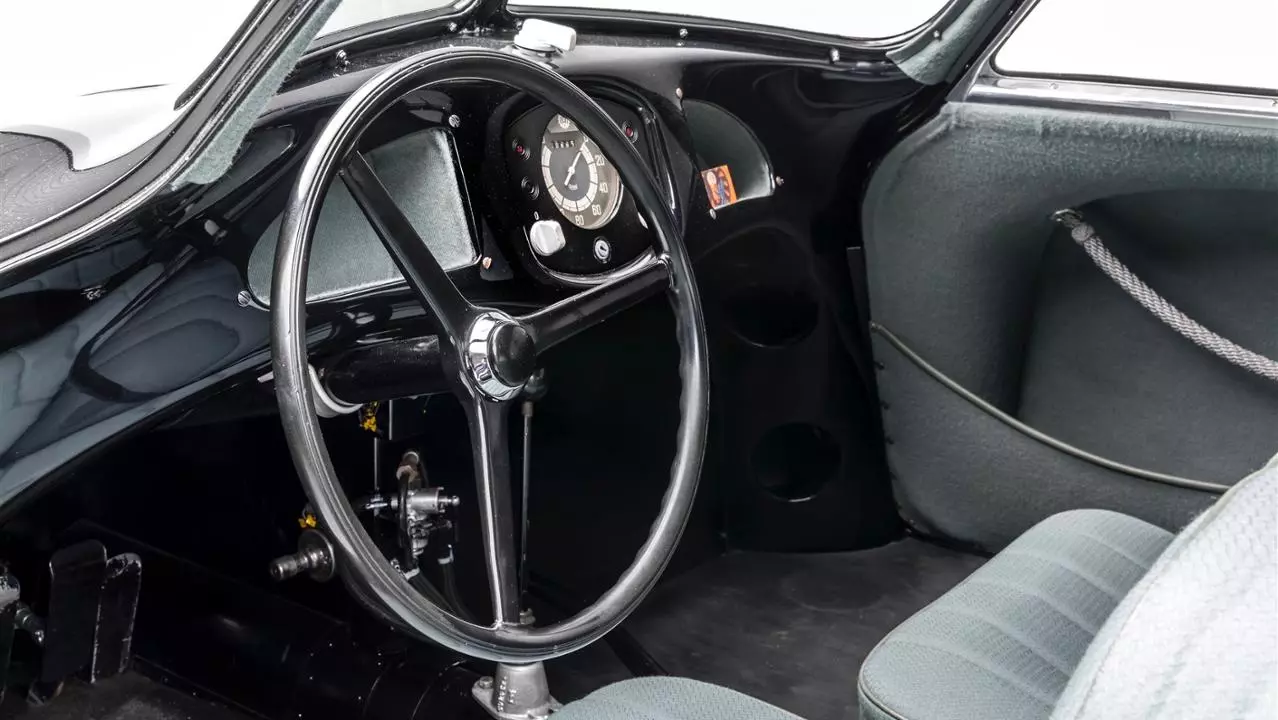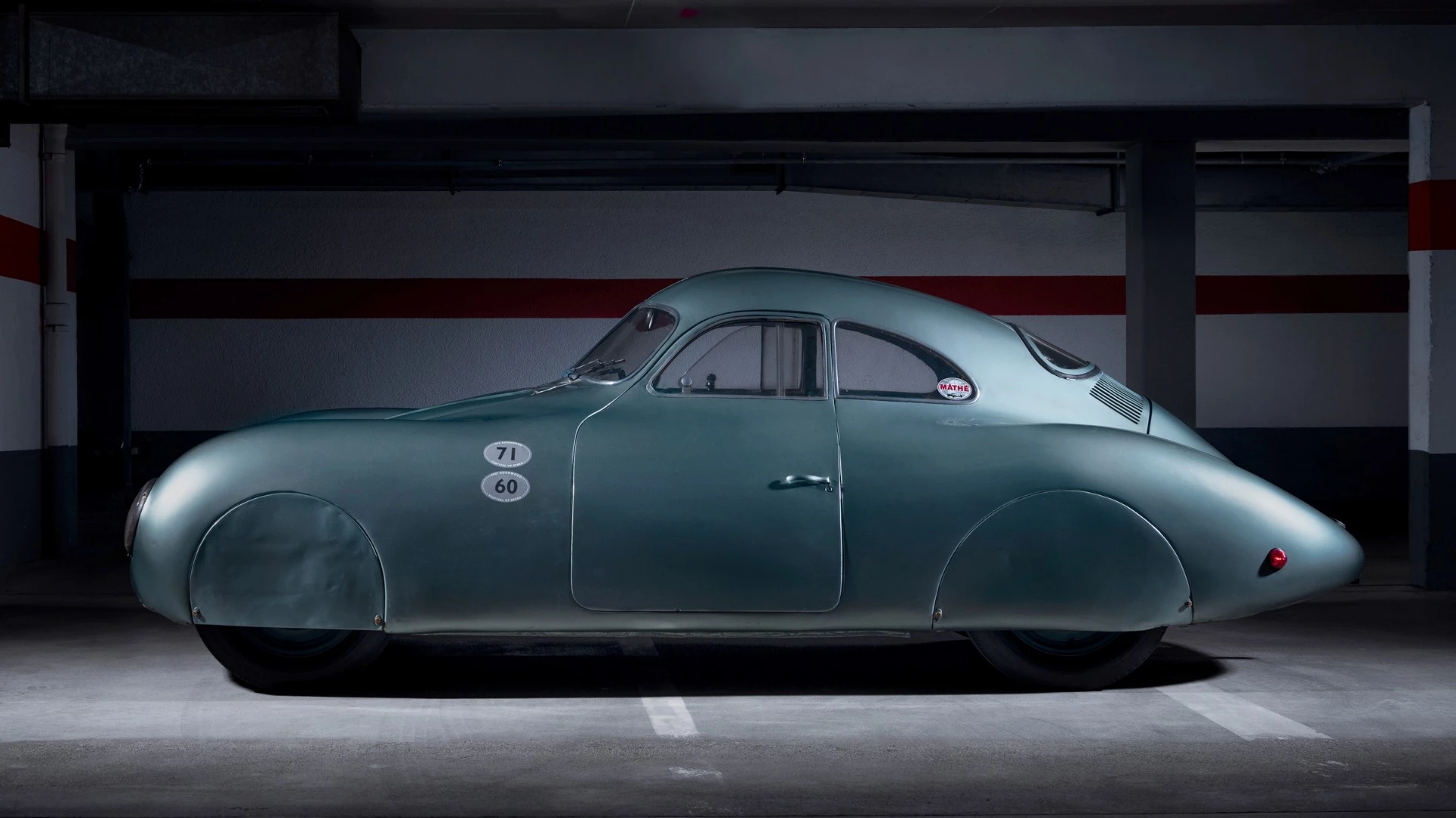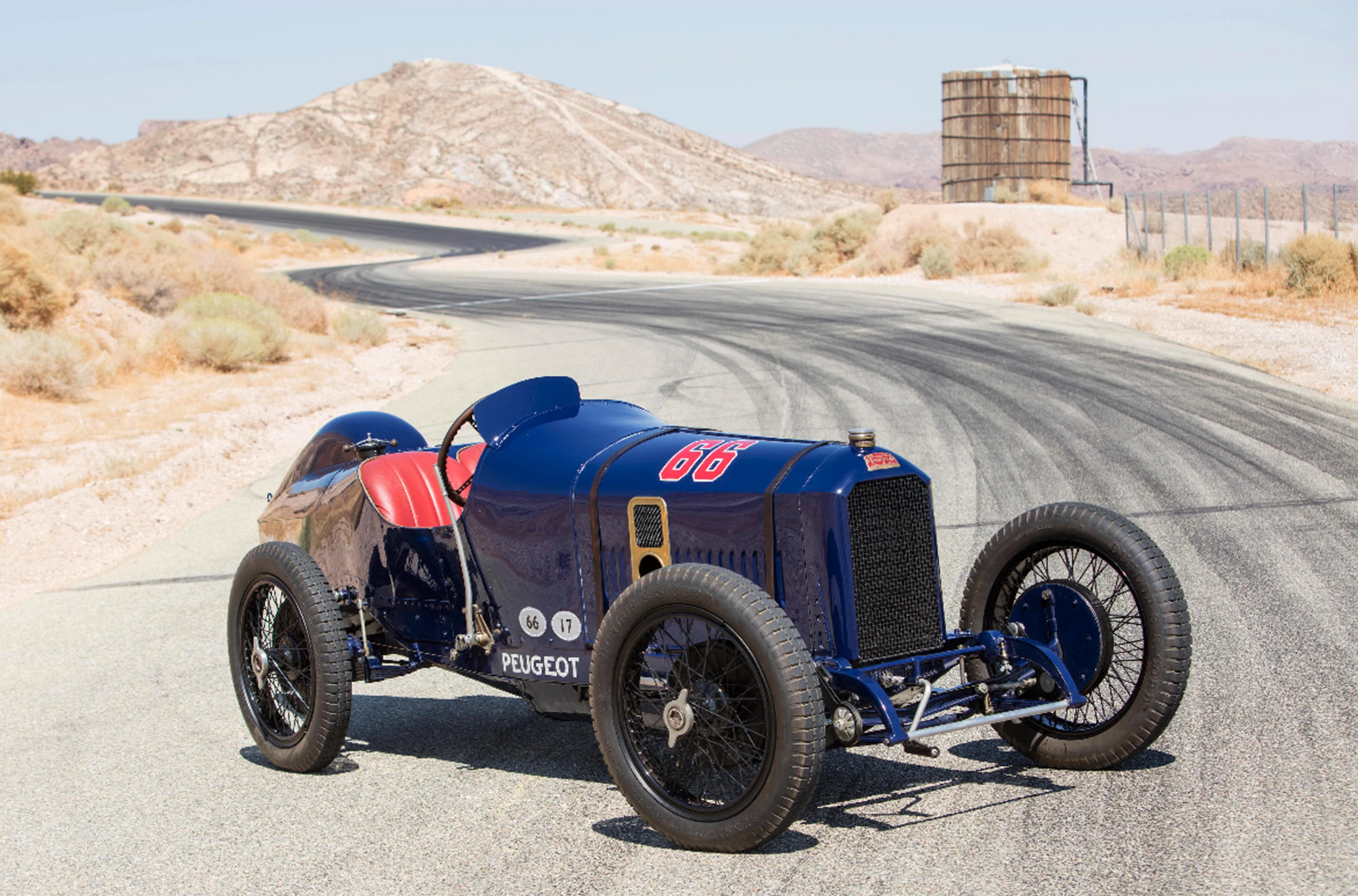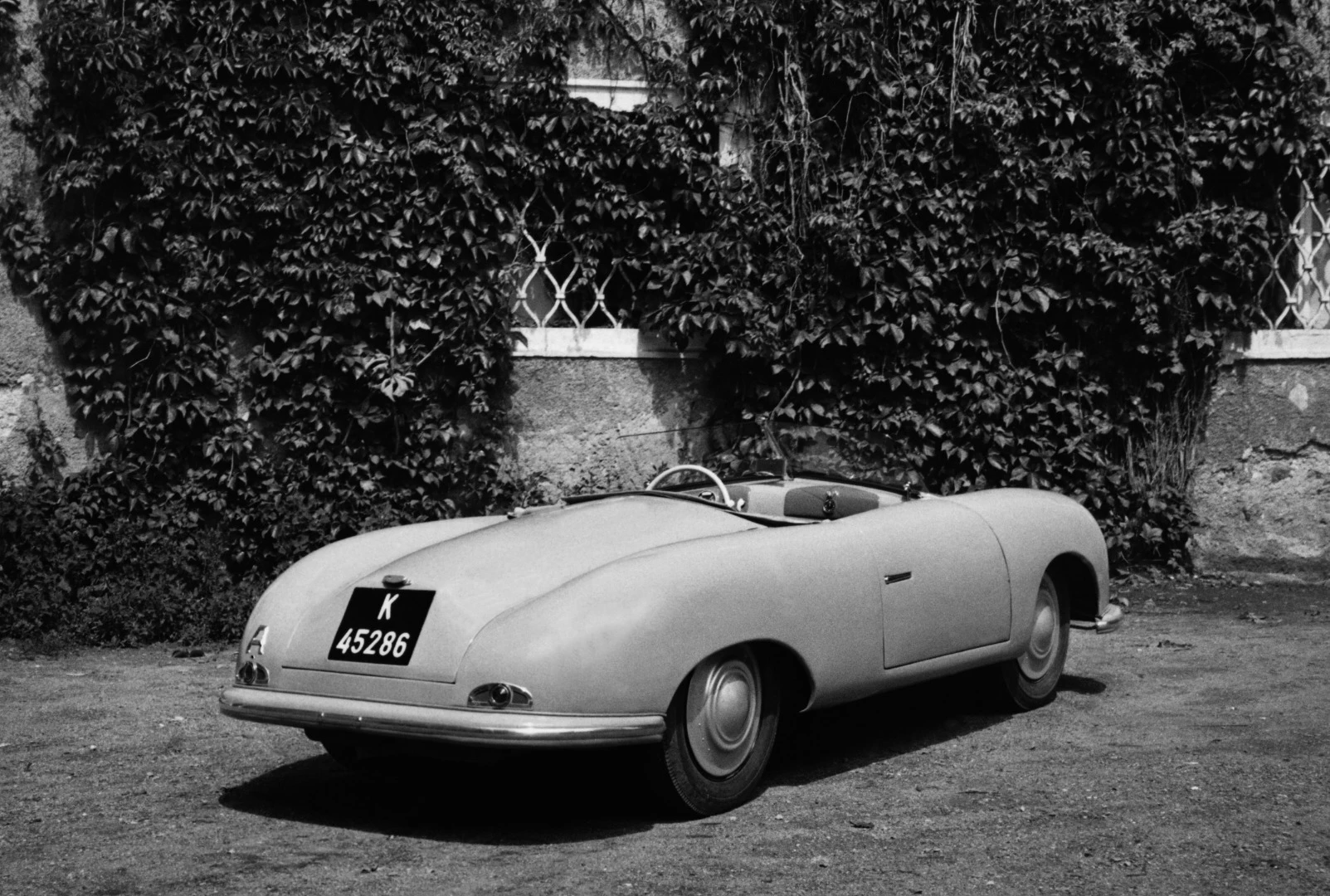There are only a handful of places where truly landmark automobiles are auctioned: New York, London, Paris during Retromobile, the Goodwood Festival of Speed and the world's largest and most important gathering of ultra high net worth automotive enthusiasts, Monterey Car Week.
Monterey is traditionally the place where automotive auction records get smashed, and this year the star of the show will be the original Porsche. It is one of three original Porsche Type 64 (also known as Type 60K10) cars that built, the only one to remain intact from new, and it is the very first car to wear the now revered Porsche nameplate.
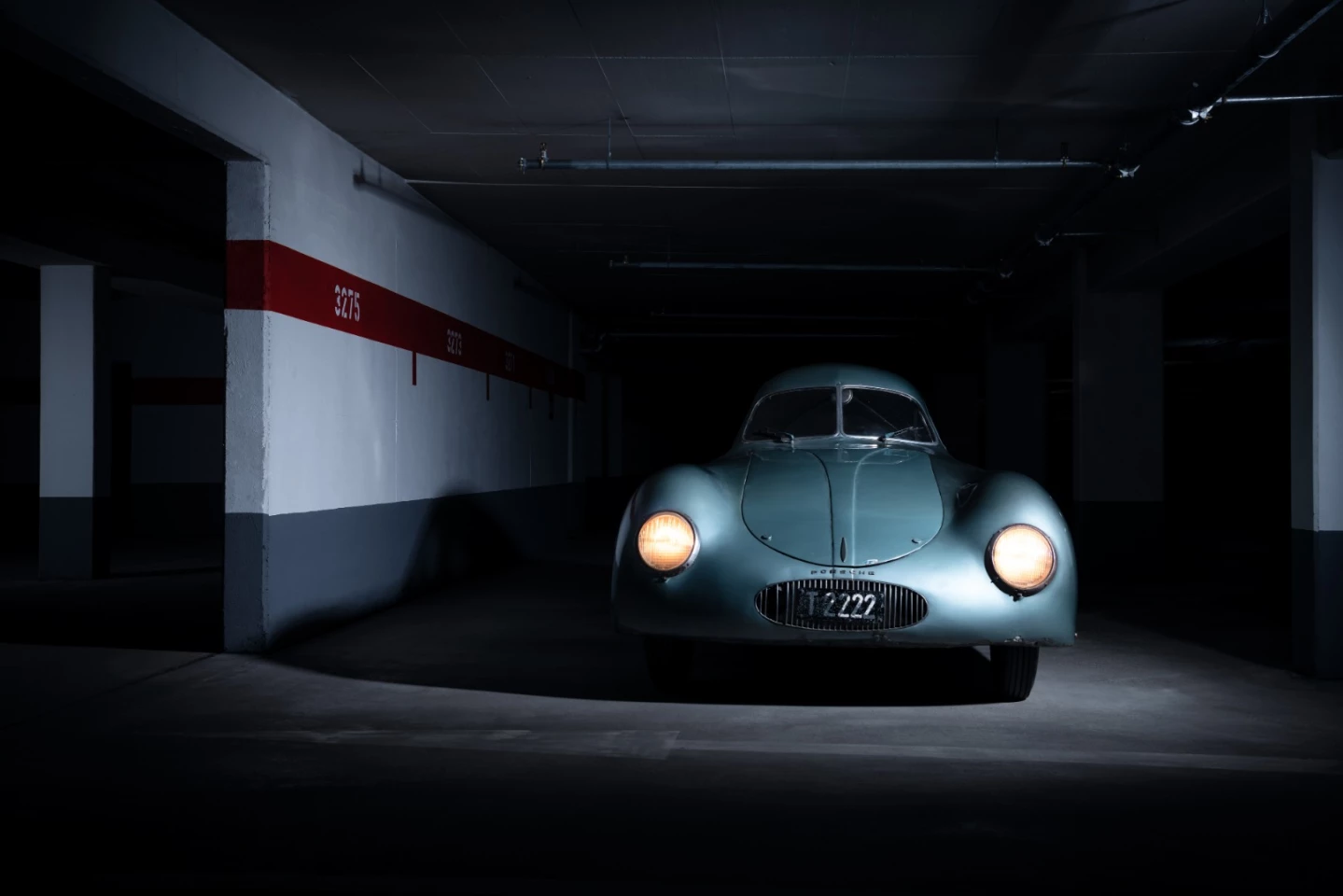
Only two of the original three Type 64s are extant, with one fully restored after being badly damaged and the other (the car going to auction in Monterey in August) having been freshened in 1947. Pictured above, it is original, authentic and has been unmolested in every respect since then.
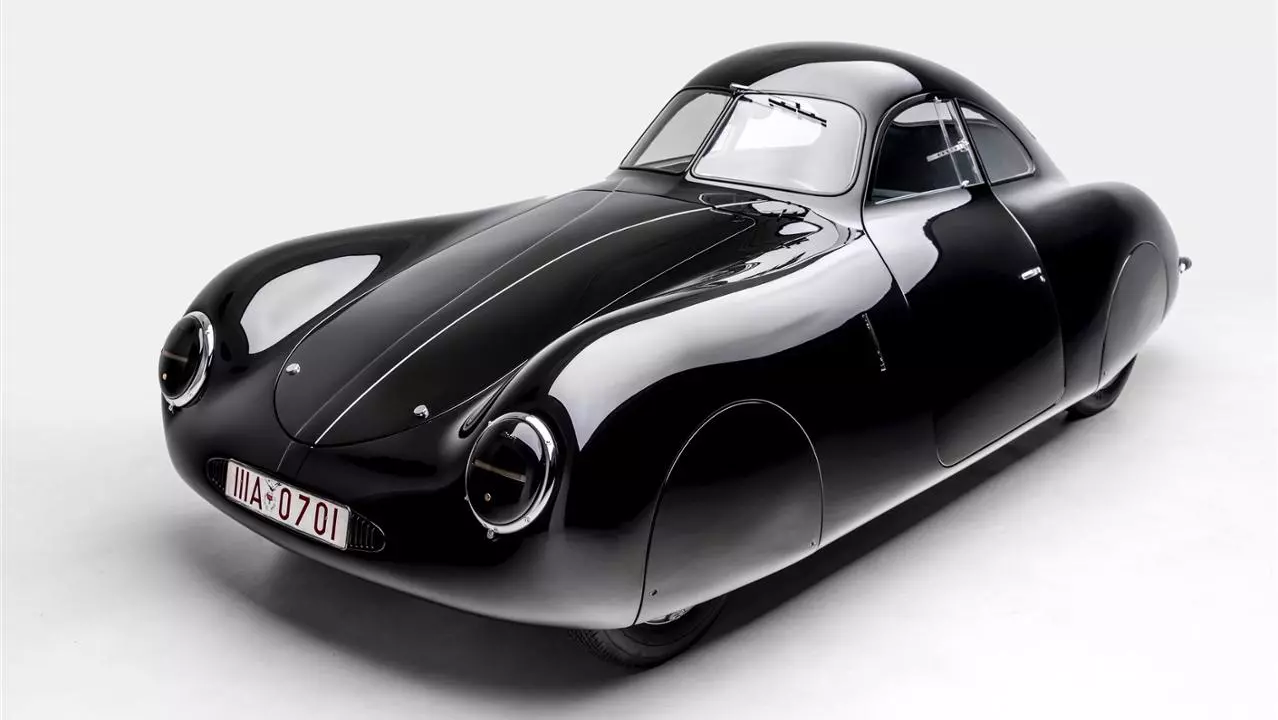
The fully restored Porsche Type 64 now resides in the Petersen Automotive Museum – it was partially destroyed during WW2, but the beauty of the design can be seen in all its glory above.
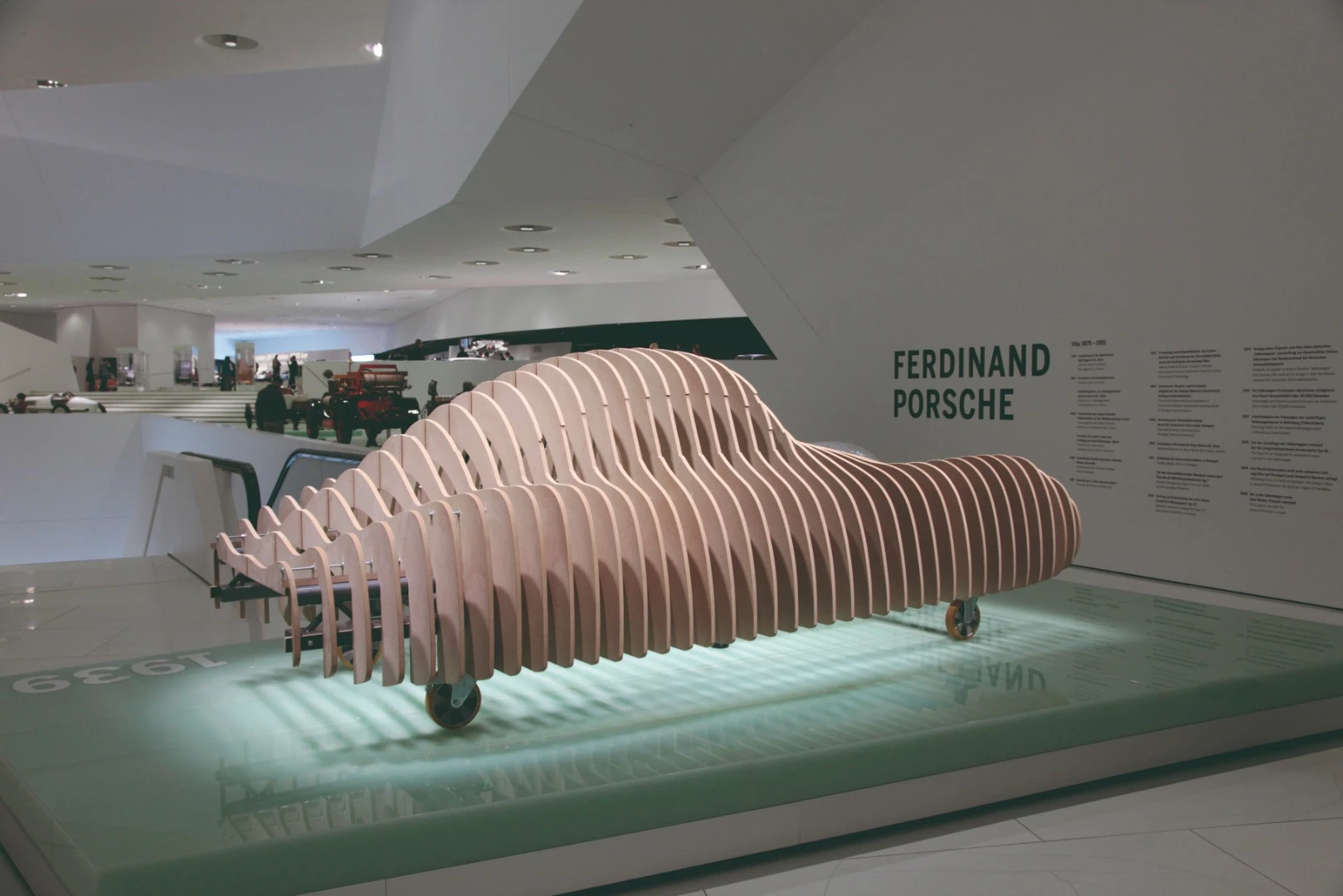
Testimony to the gravitas of this automobile is that the world-famous Porsche Museum created a replica of the car for display, using the original production methodologies, and the replica has been the star of the museum for the best part of the last decade.

The auction car's story is extraordinary, because it is indeed, the "missing link" between Volkswagen and Porsche, between two distinct automotive families that both had a profound effect on the world's mobility.

Volkswagen commissioned the three Volkswagen long-distance racing versions of the KdF-Wagen in preparation for the 1,500-kilometer (932-mile) Berlin-Rome race set for September 1939, with a view to promoting the launch of the KdF-Wagen production car (now known as the Volkswagen Beetle or Bug).
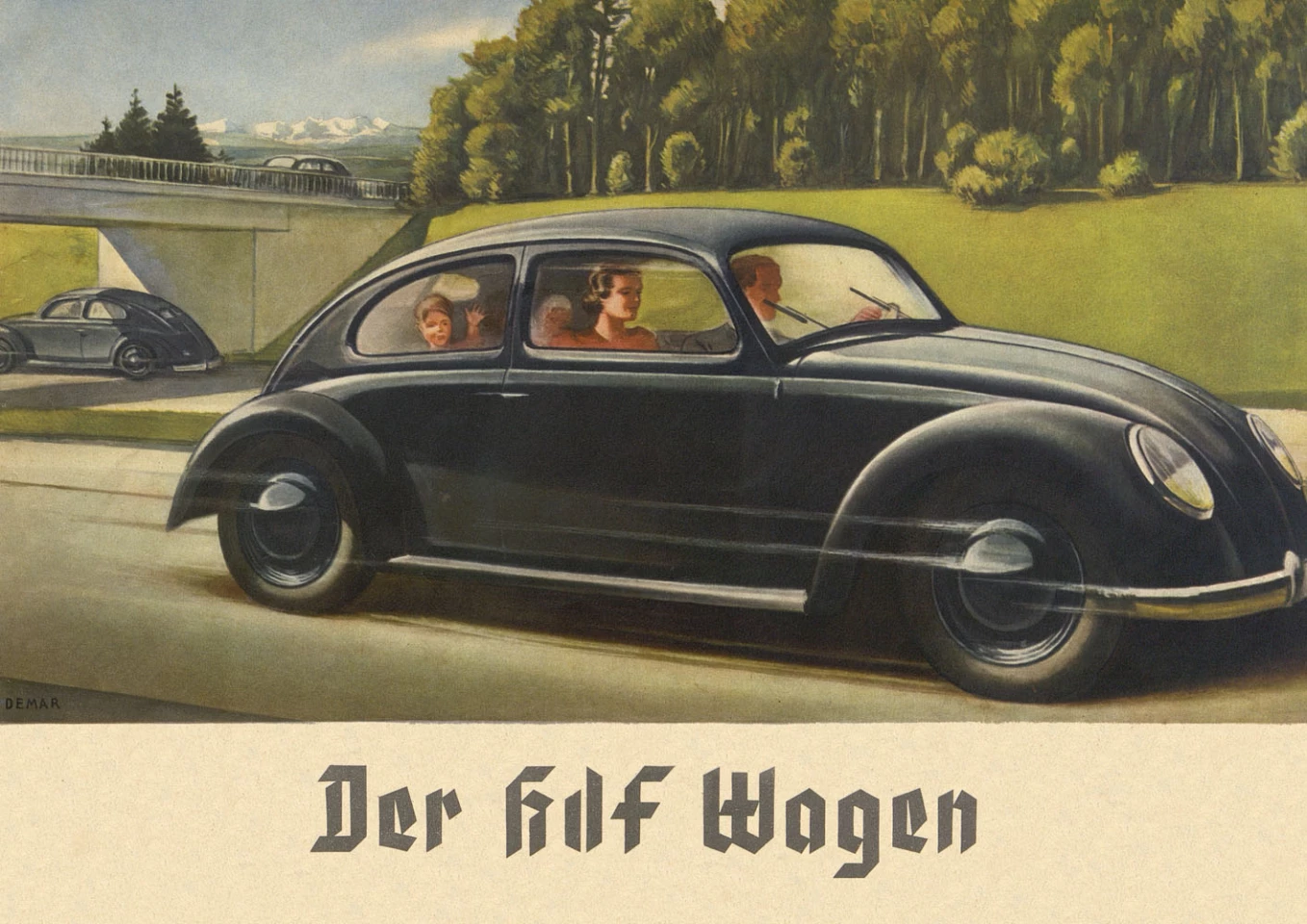
The race for which the Type 64 was built and the KdF-Wagen launch were both postponed. Germany invaded Poland on September 1, 1939, France and Great Britain declared war on Germany on September 3, 1939, and World War II began.
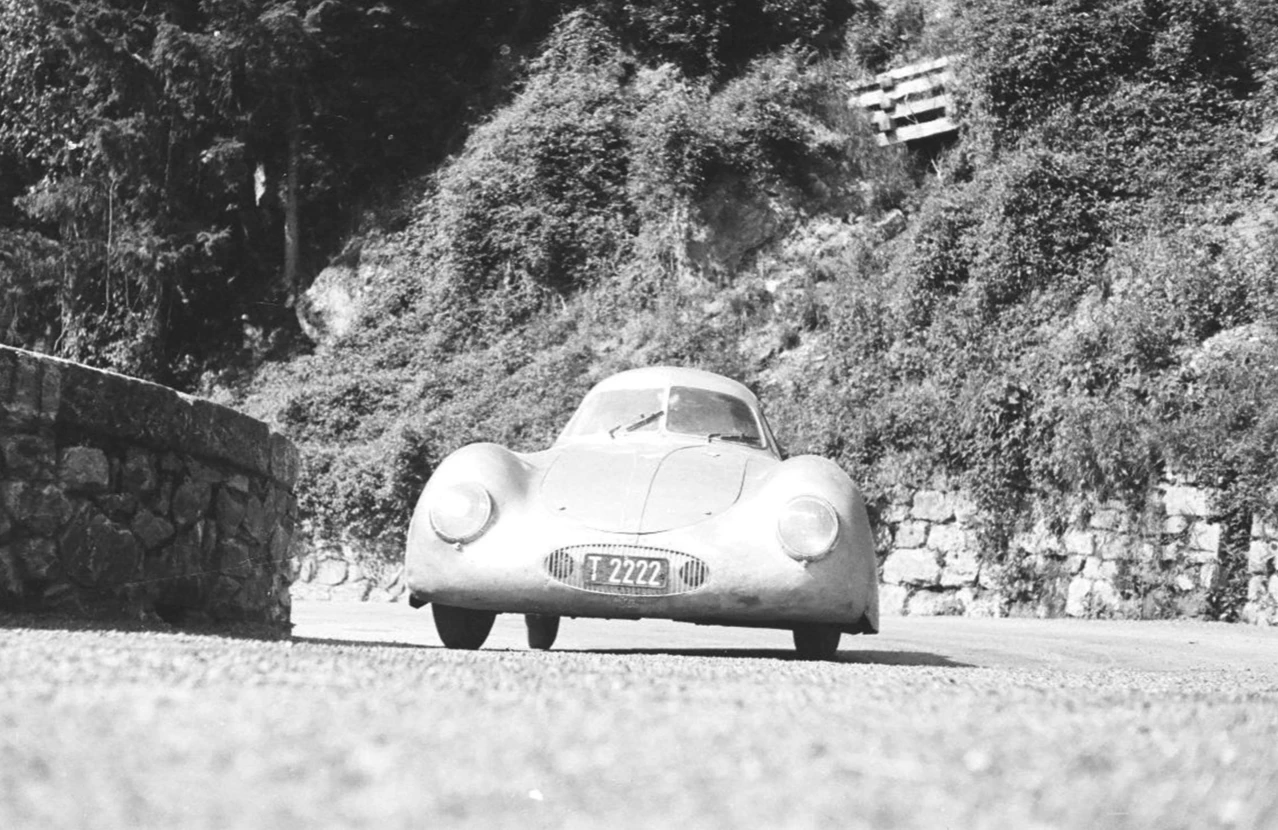
The Type 64 was designed by the same engineers who subsequently create Porsche's first production car, the 356. The Type 64 was built for speed, and embodies all the hallmarks of the Porsche ethos – aerodynamic efficiency, enough power for the job, superb handling, and light weight. The body of the Type 64 was crafted in aluminum by Reutter.
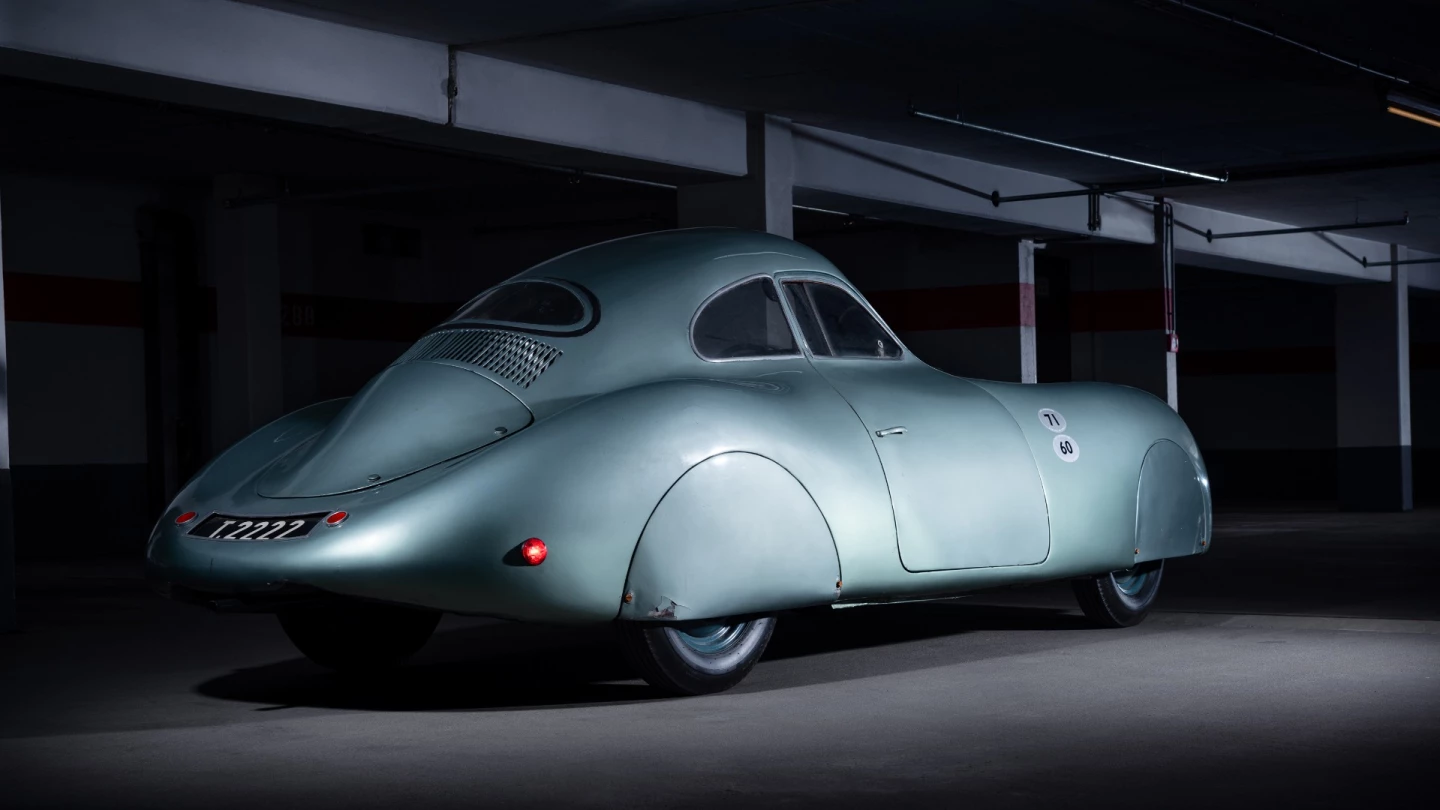
As the only surviving Type 64, this was the first automobile in the world to be registered as a Porsche, in Austria under the new company name in 1946.
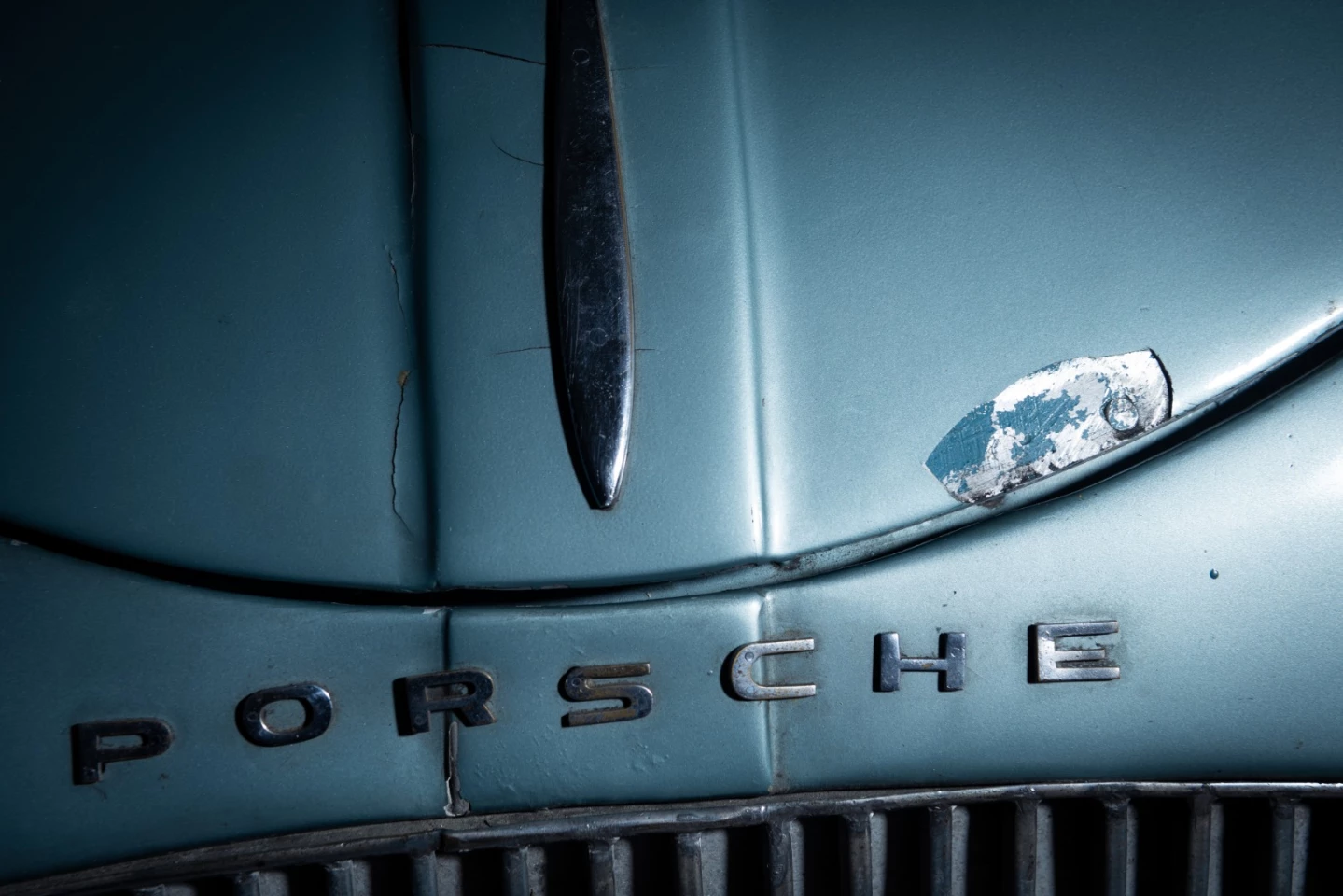
Even the raised letters spelling out "PORSCHE" on the nose cone of this car were applied by Ferry Porsche himself.
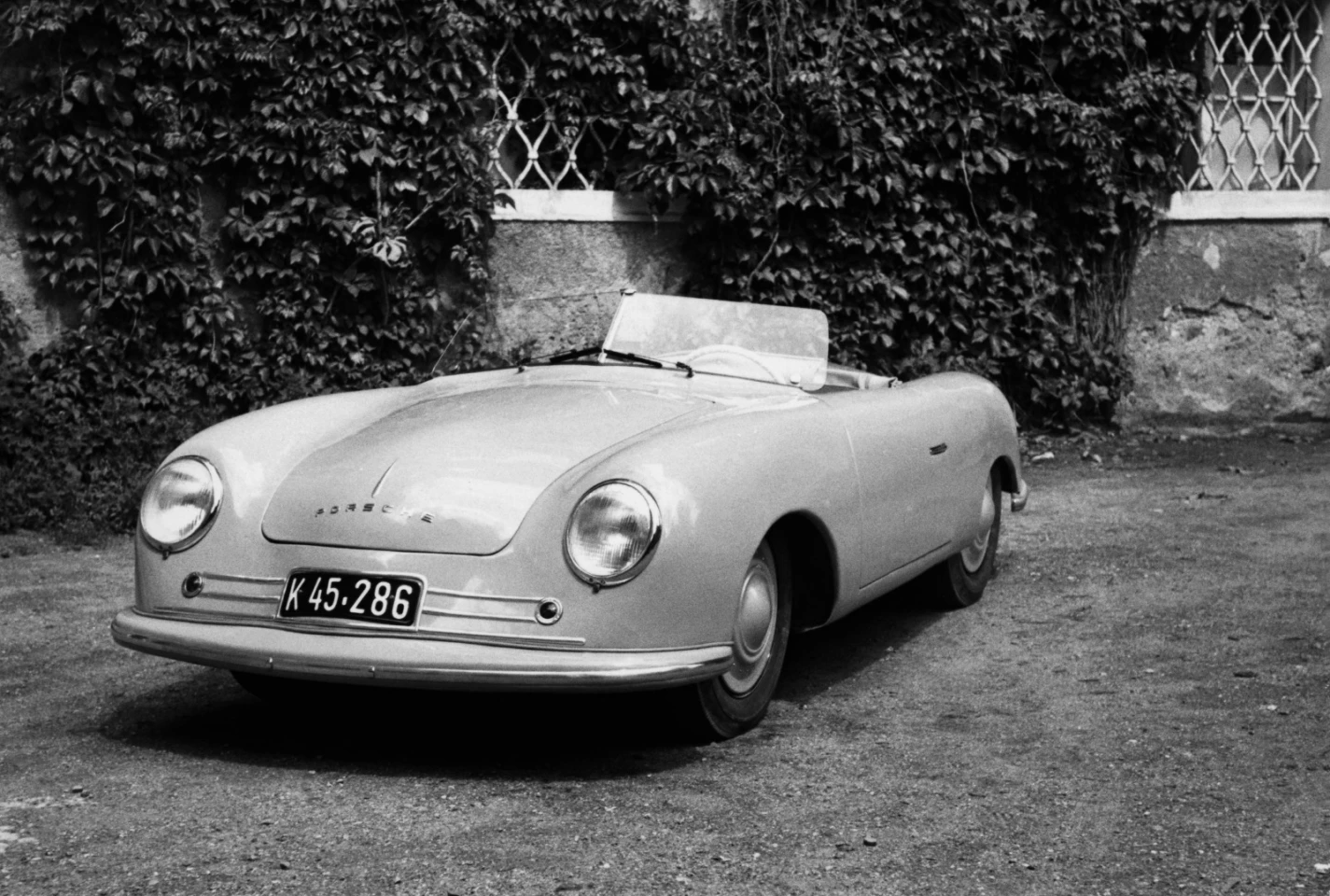
In 1947 the car was sent to Italy for restoration, where young designer Battista "Pinin" Farina administered his magic. One year later, Porsche demonstrated the Type 356 roadster on public roads in Innsbruck, with this Type 64 by its side.
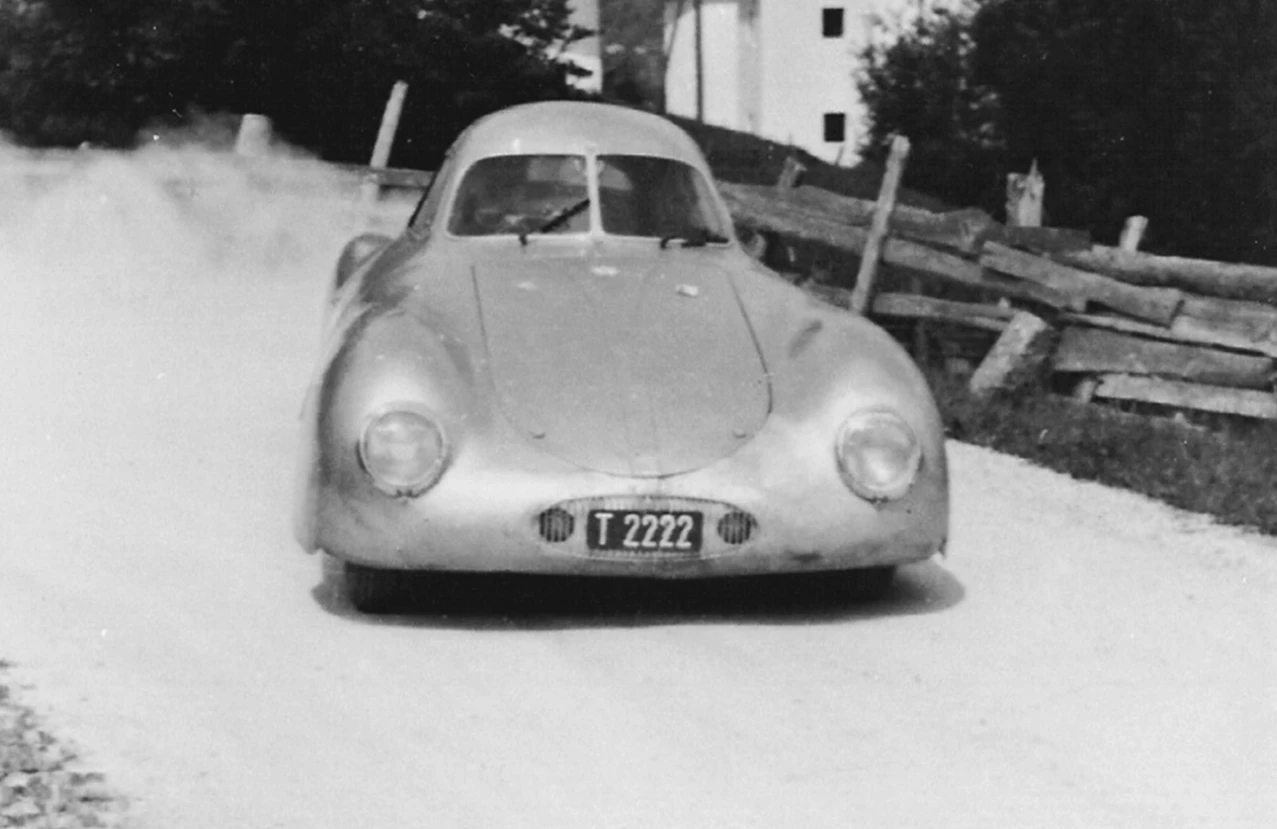
Austrian racing driver Otto Mathé performed demonstration laps of the Type 64 at the time, and he was so taken with the car that he purchased it directly from Porsche in 1948 and became the only person to race a Type 64 in period, winning countless races in the late 40s and early 50s.
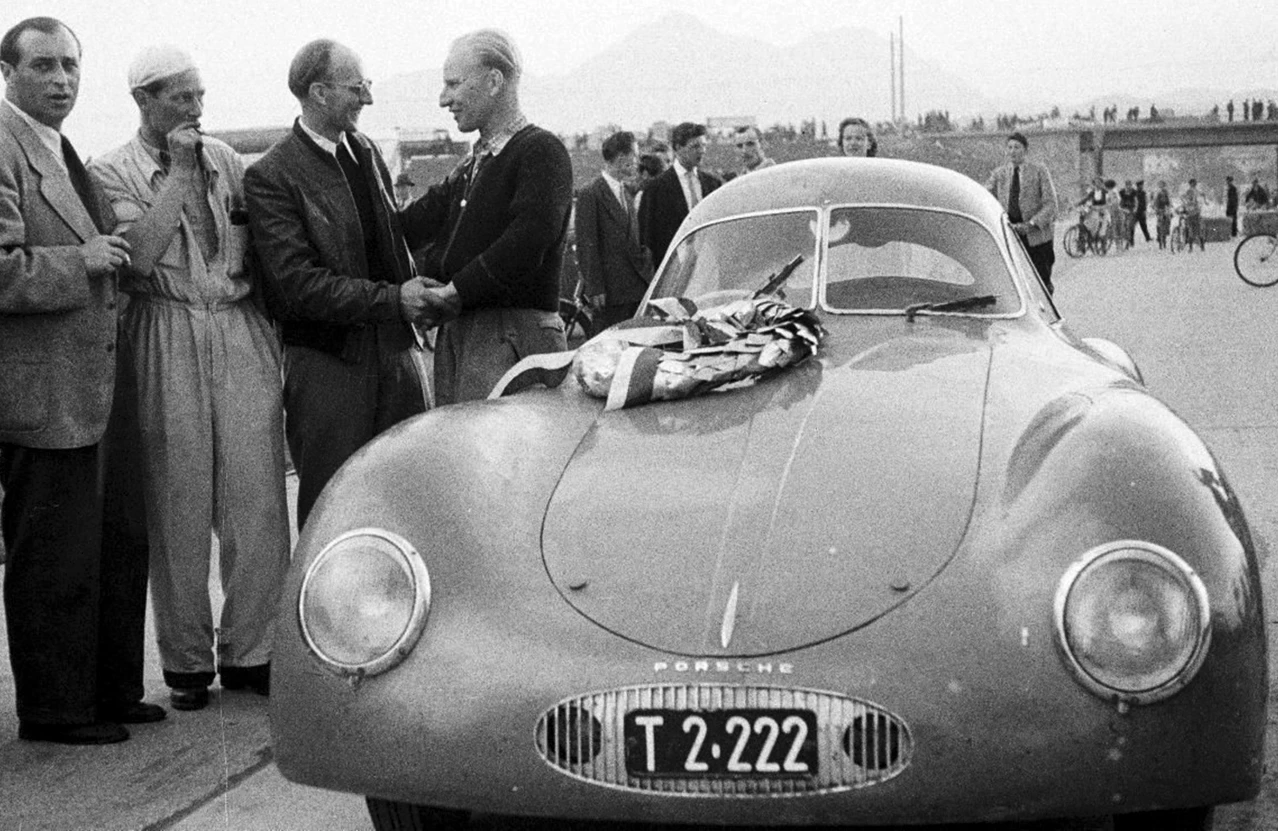
This car was hence the first of many cars wearing a Porsche badge to win races – a tradition upon which the marque was built.
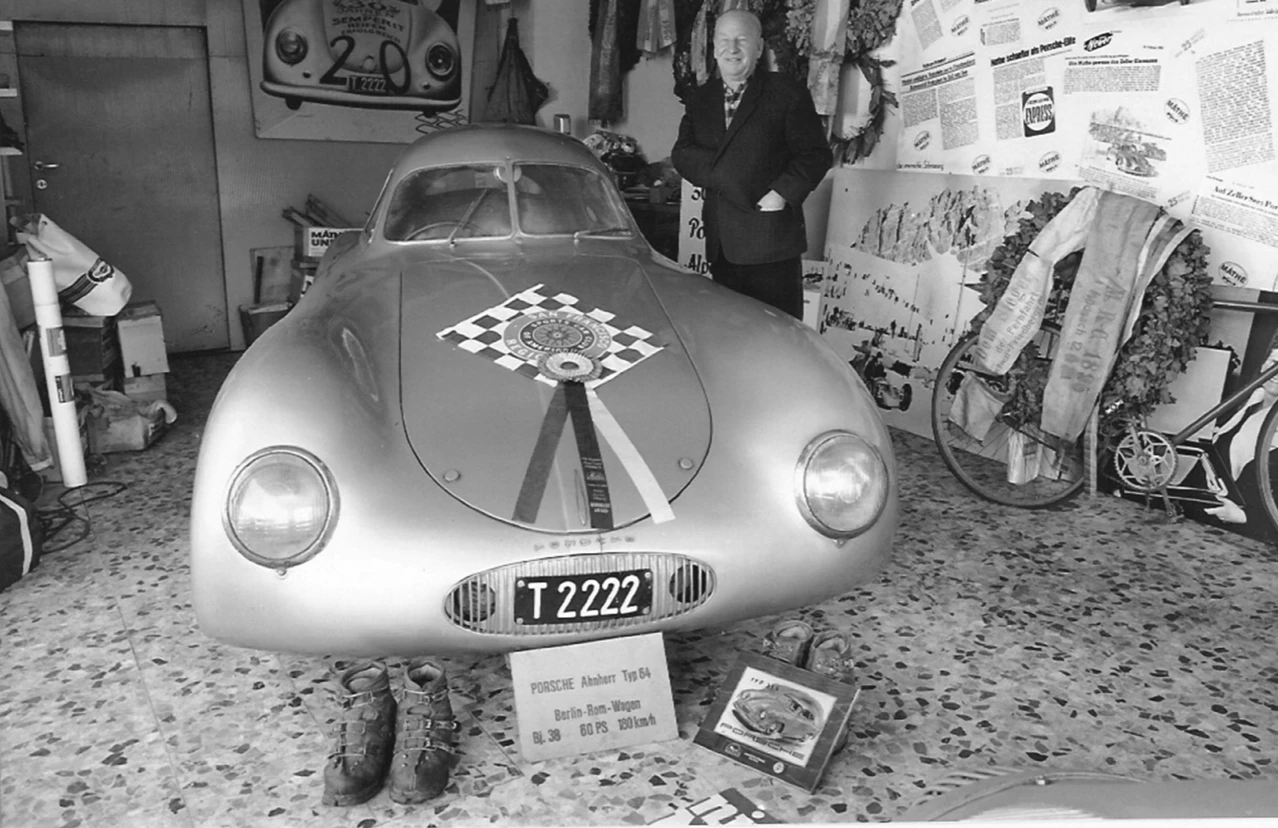
The above image taken in 1984 at Mathé's home in Innsbruck, Austria shows Herr Mathé with the "Ahnherr" (German for ancestor). Mathé kept the car for 46 years until his death in 1995.

As far as prices that we can expect for this milestone vehicle, well-respected marque specialist Andy Prill said of this car, "I've seen countless special Porsches in my career, but nothing like this. I was very careful in examining the authenticity of the Type 64, no. 3 and its chassis. After spending many days with the car, I have found evidence that all key components of the cars are original as built in 1939/1940. This is the most historically significant of all Porsche cars and it is simply incredible to find the very first Porsche in this original condition."
Whether the marketplace will adjudge the Type 64 to be the most significant of all Porsche vehicles in monetary terms has yet to be determined. Indeed, given the Porsche history, its place in historical context will also be adjudged by the price it fetches.

In 2017, a 1914 Peugeot L45 Grand Prix car (Chassis no. 1 Engine no. 1) sold for just US$7,260,000 – the car is arguably the most important automobile to go to auction this century or last, having been the common ancestor to every modern sportscar in history with its DOHC four-valve engine configuration surviving to this day.
The Porsche Type 64 is unlikely to sell for so little, and is expected to fetch more than $20 million when it goes to auction with RM-Sotheby's in August.
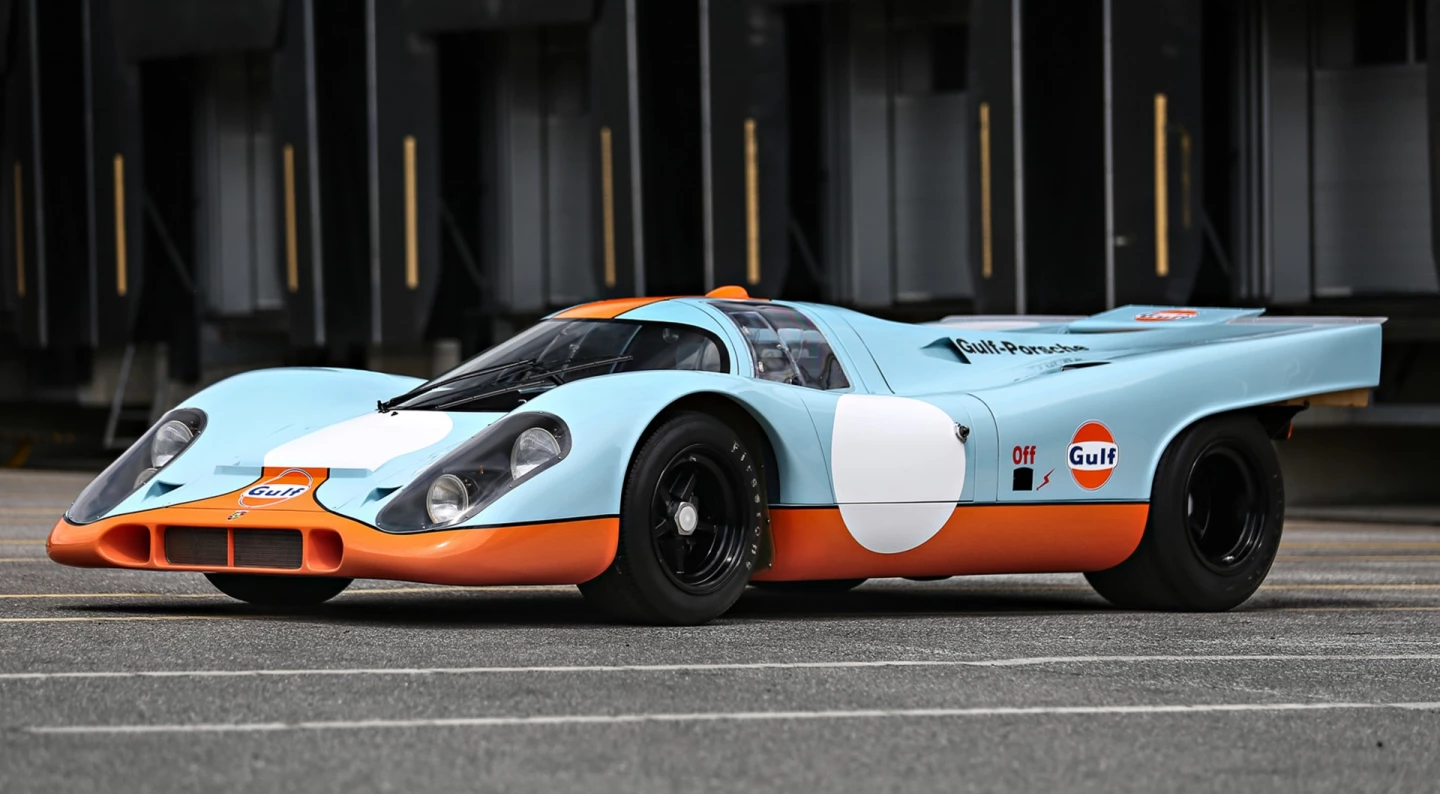
The record price paid for a Porsche at auction is the $14,080,000 paid for a 1970 Porsche 917K at Gooding & Company's 2017Pebble Beach auction.
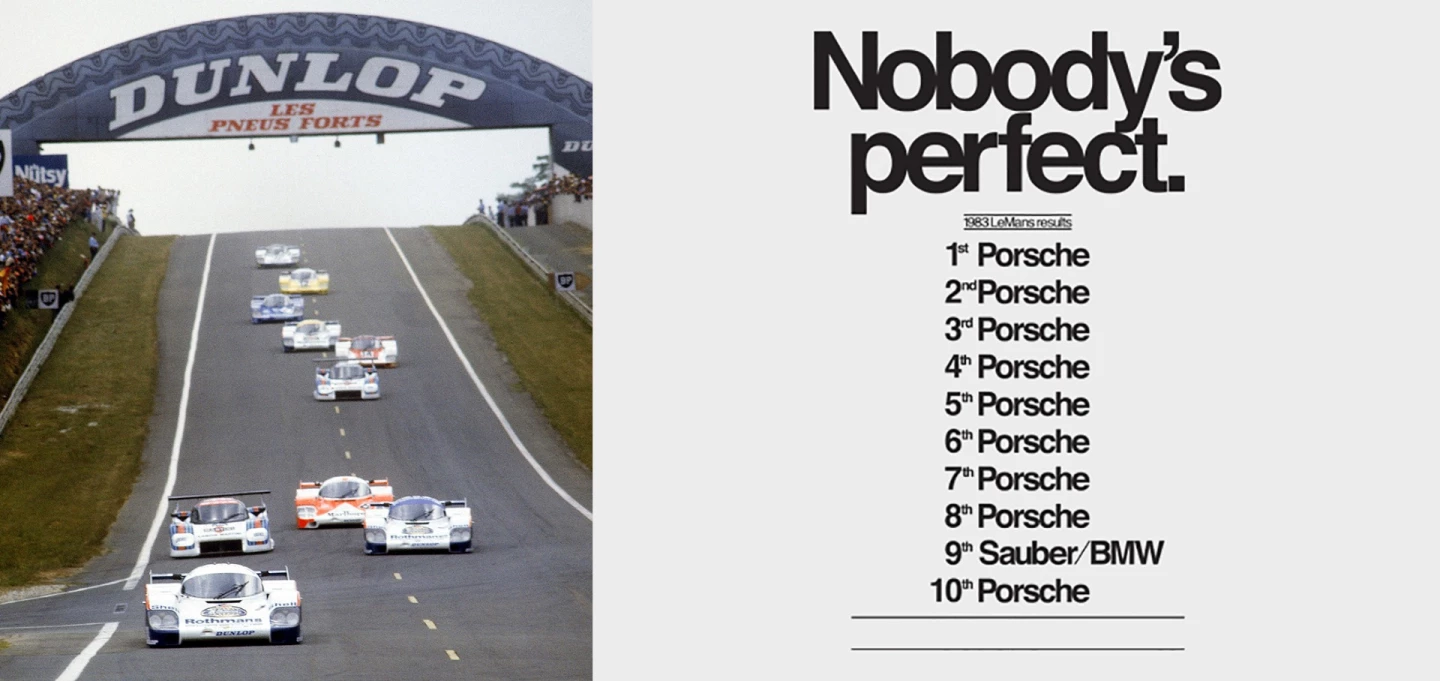
The previous record price for a Porsche of $10,120,000 was also achieved by Gooding & Company when a Le-Mans-winning 1982 Porsche 956 sold at Pebble Beach in 2015. The advert (above right), which that car helped write the copy for is testimony to the monumental heritage which the Type 64 began.
Auction page: RM Sotheby's
